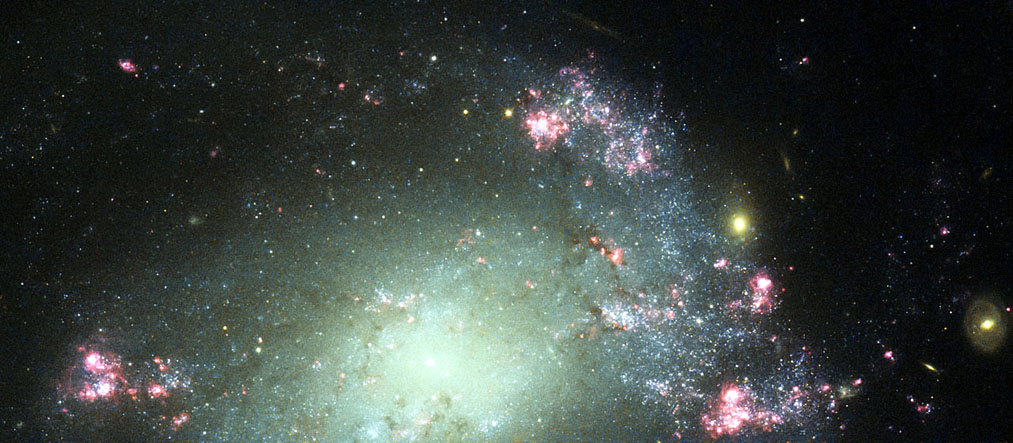
A Very Sloppy, But Very Colorful Galaxy
| published August 15, 2015 |
By Thursday Review staff
The Hubble Space Telescope is particularly gifted at capturing dramatic images, some of which we have shared via NASA here at Thursday Review—including stunning images of spiral galaxies and elegant star formations. But, obsessive-compulsive stargazers beware: this image may compel you to clean your garage or tidy up your patio, since travel this far in space isn’t yet possible.
A recent photograph by the Hubble shows an immense, densely packed region known as NGC-428, an irregularly shaped and highly disorganized galaxy located deep within the constellation Cetus, also known as The Sea Monster.
This sloppy, disheveled but colorful galaxy is roughly 48 million light-years away from Earth, and its features include a rich display of pink, red, yellow and light blue stars and star clusters. Some astronomers believe that NGC-428’s relative disarray—most galaxies are arranged in spirals, disks, spheres or neat bands—may be the result of a collision between two smaller galaxies, or the result of a messy encounter as one galaxy swept through the other. Evidence for this theory can also be found in the range of gases and hot spots associated with the violent merger of two rotating galaxies. The presence of enough of the extreme hot gases formed by a collision can even trigger a long period of birth of new stars, which would explain the diversity of color found in NGC-428.
This photo is new, but the discovery of NGC-428 is not. It was first observed and recorded by the famed German-born British astronomer William Herschel in December 1786. Herschel, who designed and constructed his own telescopes, was a leading authority on the cosmos, and his catalogues and publications include thousands of galaxies, nebulae, and star systems. Herschel was most famous for his 1781 discovery of Uranus, which was for the centuries prior to 1781 thought to be a star. Herschel was so well-respected as a stargazer and cosmologist, that King George III appointed him to the lifetime role of “Official Court Astronomer.” Among his stargazing tools was a massive telescope—which he designed and built himself—with a focal length of more than 40 feet, and a lens diameter of more than 49 inches. It was the largest telescope ever built to that day, and only one day after it was put to work it enabled him to discover a moon of Saturn.
Related Thursday Review articles:
The Lonely Galaxy; Thursday Review staff; Thursday Review; June 16, 2016.
Saturn’s Outward Calm; Thursday Review staff; Thursday Review; May 18, 2015.
